Acne Vulgaris
Article Sections
Introduction
Acne vulgaris (acne) is a common skin condition that primarily involves pilosebaceous follicles (ie, hair follicle and sebaceous gland) in adolescents and adults. Types of lesions include open comedones, closed comedones, papules, pustules, and nodules that typically appear on the face, neck, chest, and back. Acne can have a significant impact on the patient's quality of life due to cosmetic and psychosocial effects.
Pathogenesis
The pathogenesis of acne involves the following:
- Follicular hyperkeratinization: Normally, stem cells in the stratum basale and stratum spinosum undergo mitosis (Figure 1) and new cells migrate superficially toward the epidermis. These new cells replace anucleate keratinocytes (ie, corneocytes) as they desquamate at the surface. However, impaired desquamation (due to increased corneocyte cohesiveness) can lead to keratin accumulation within the hair follicle that forms comedones, the initial step in the pathogenesis of acne (
Continue Learning with UWorld
Get the full Acne Vulgaris article plus rich visuals, real-world cases, and in-depth insights from medical experts, all available through the UWorld Medical Library.
Figures
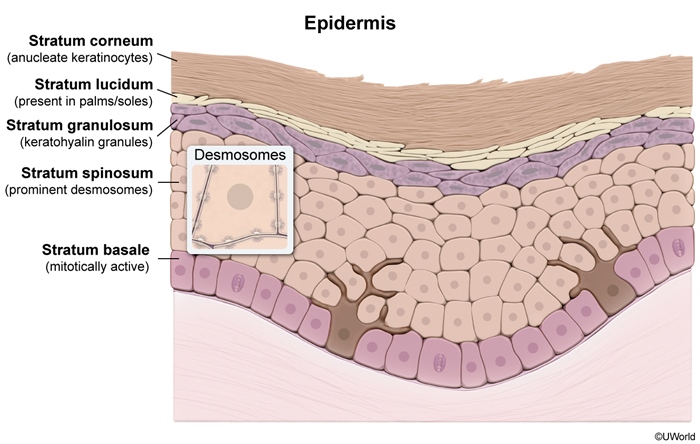
Figure 1
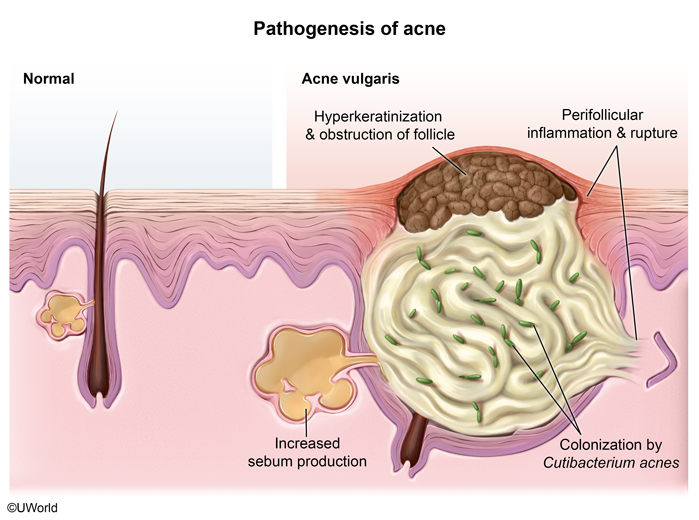
Figure 2
Images
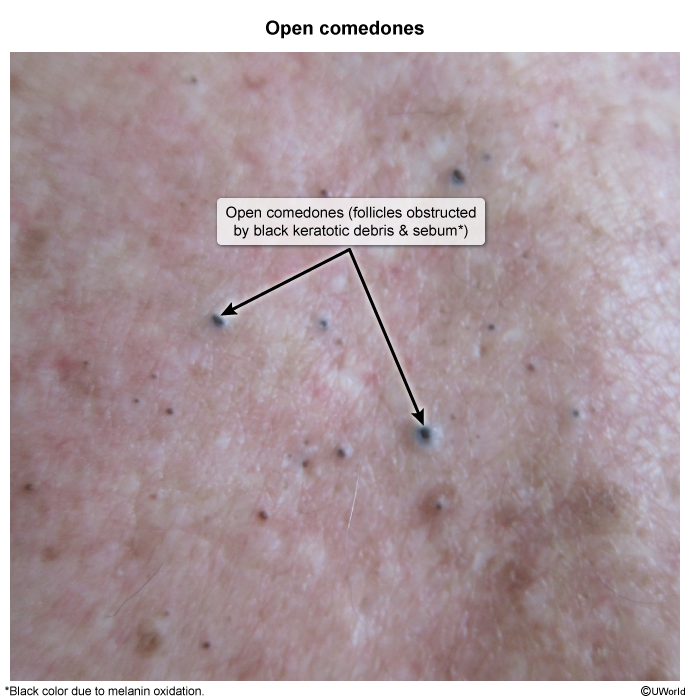
Image 1
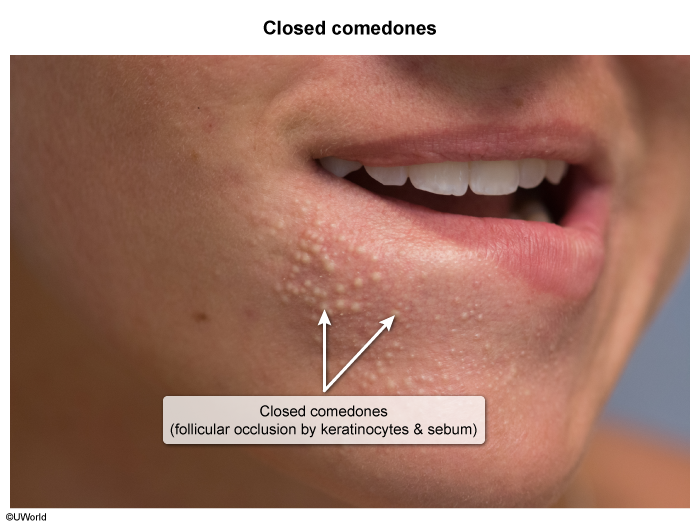
Image 2
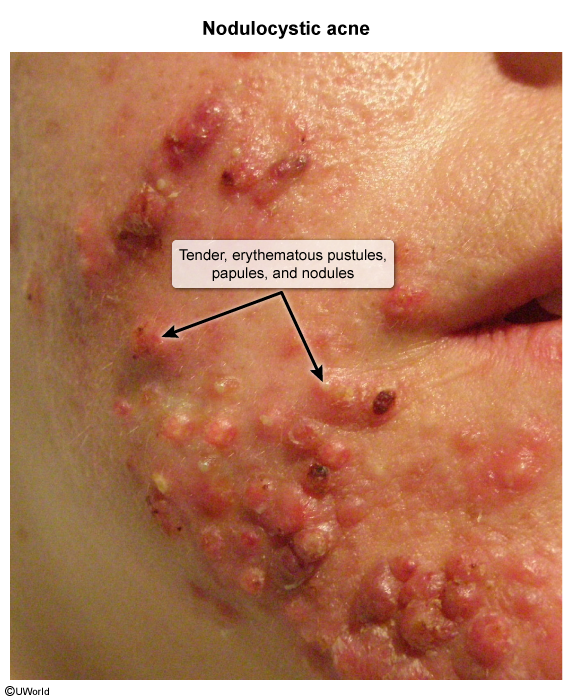
Image 3
Tables
Table 1